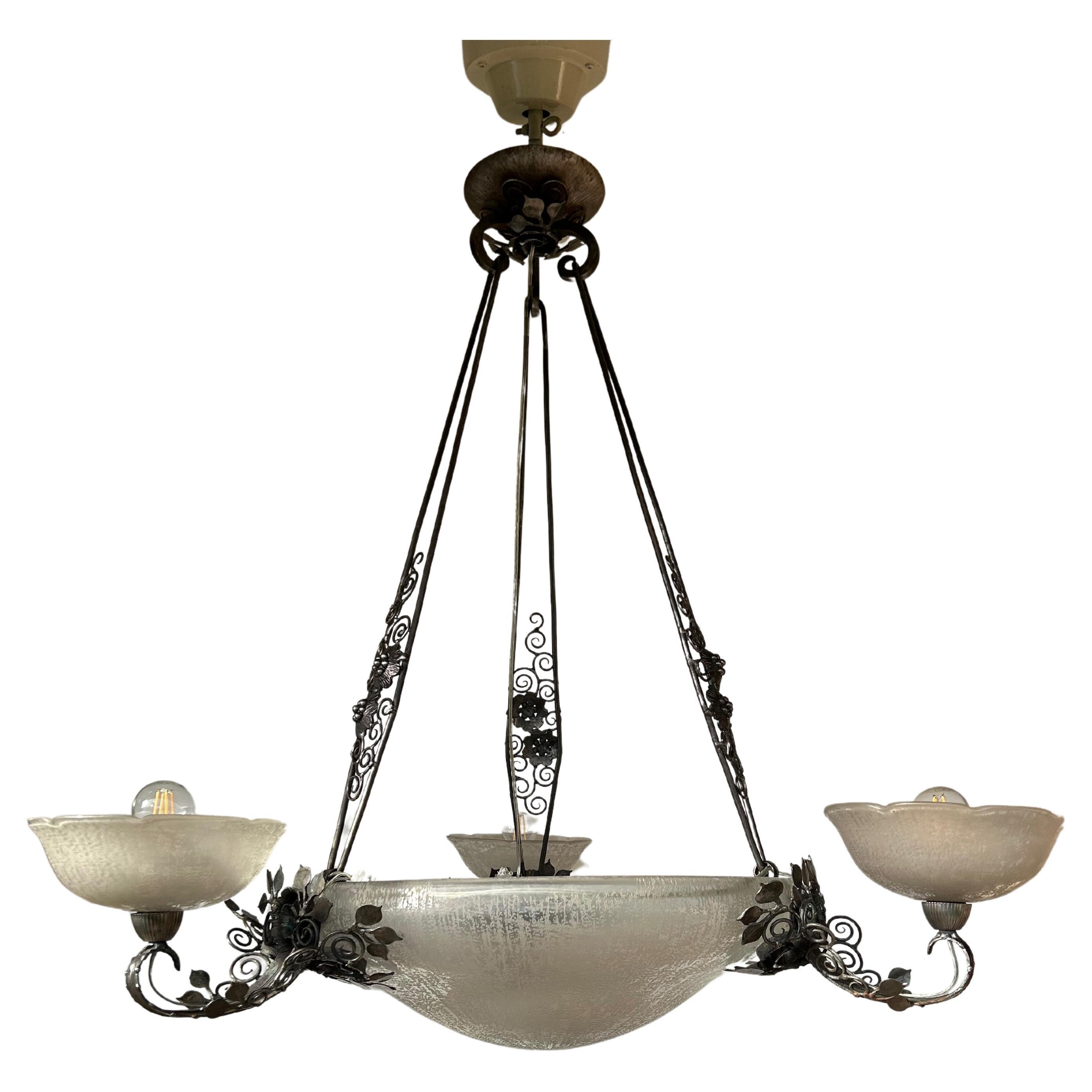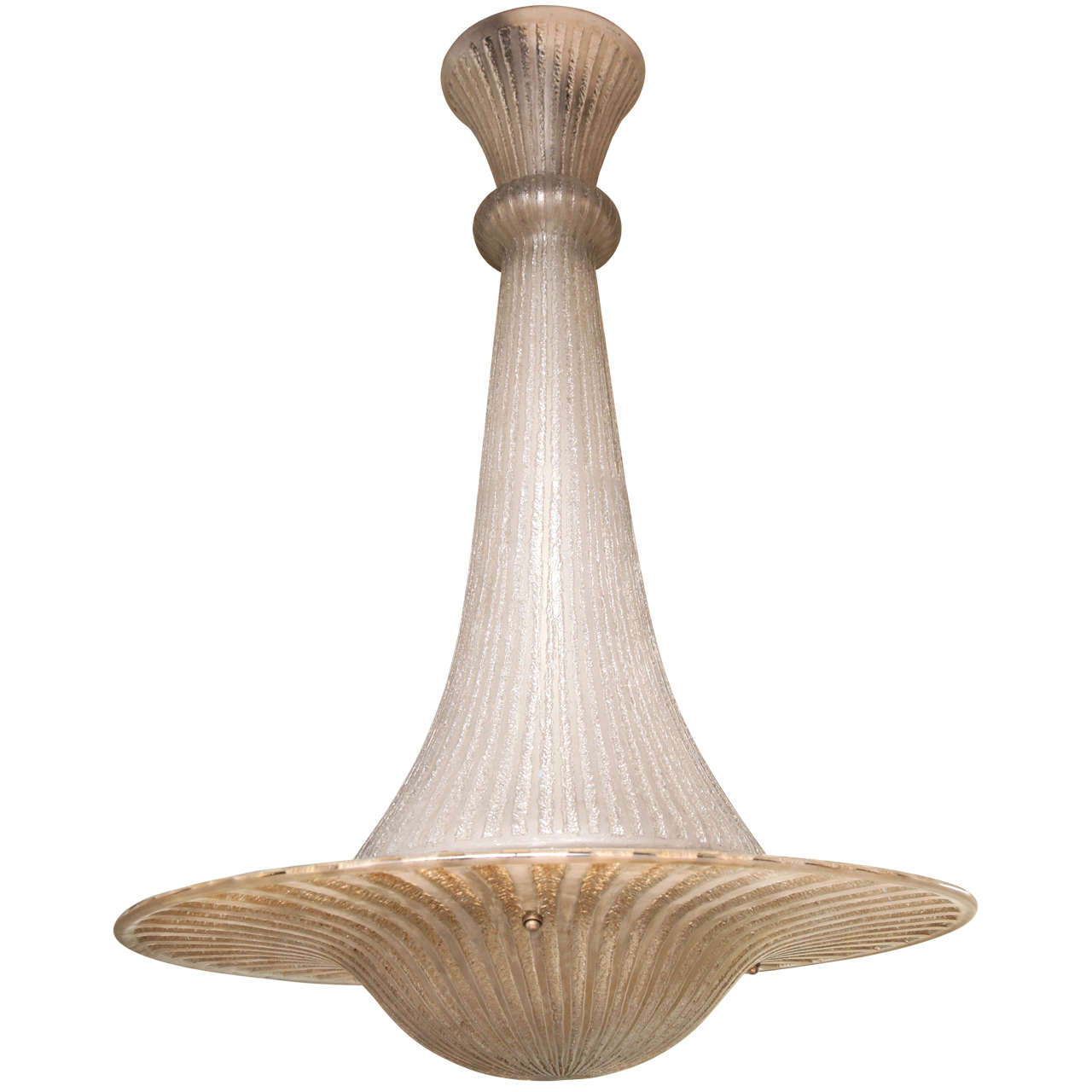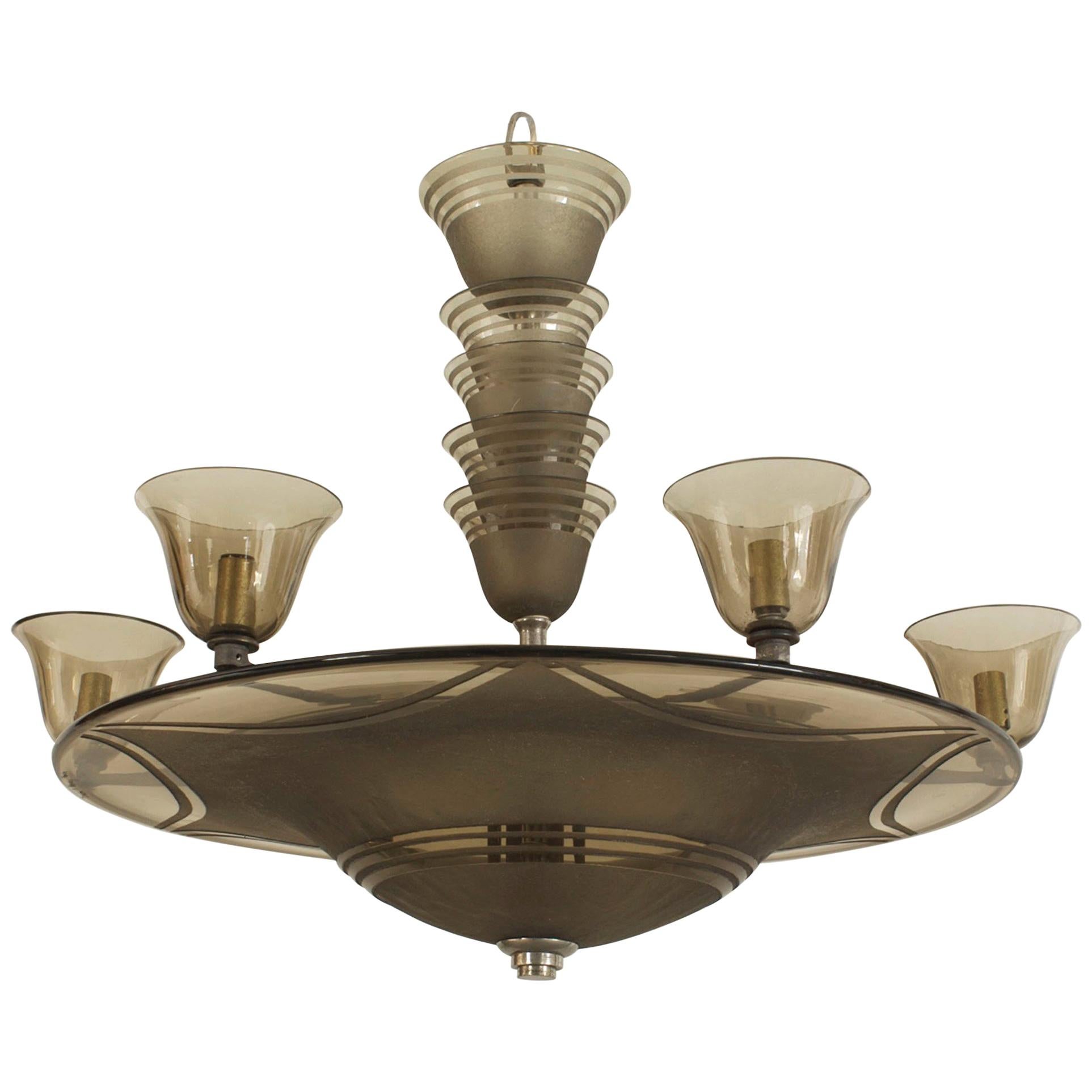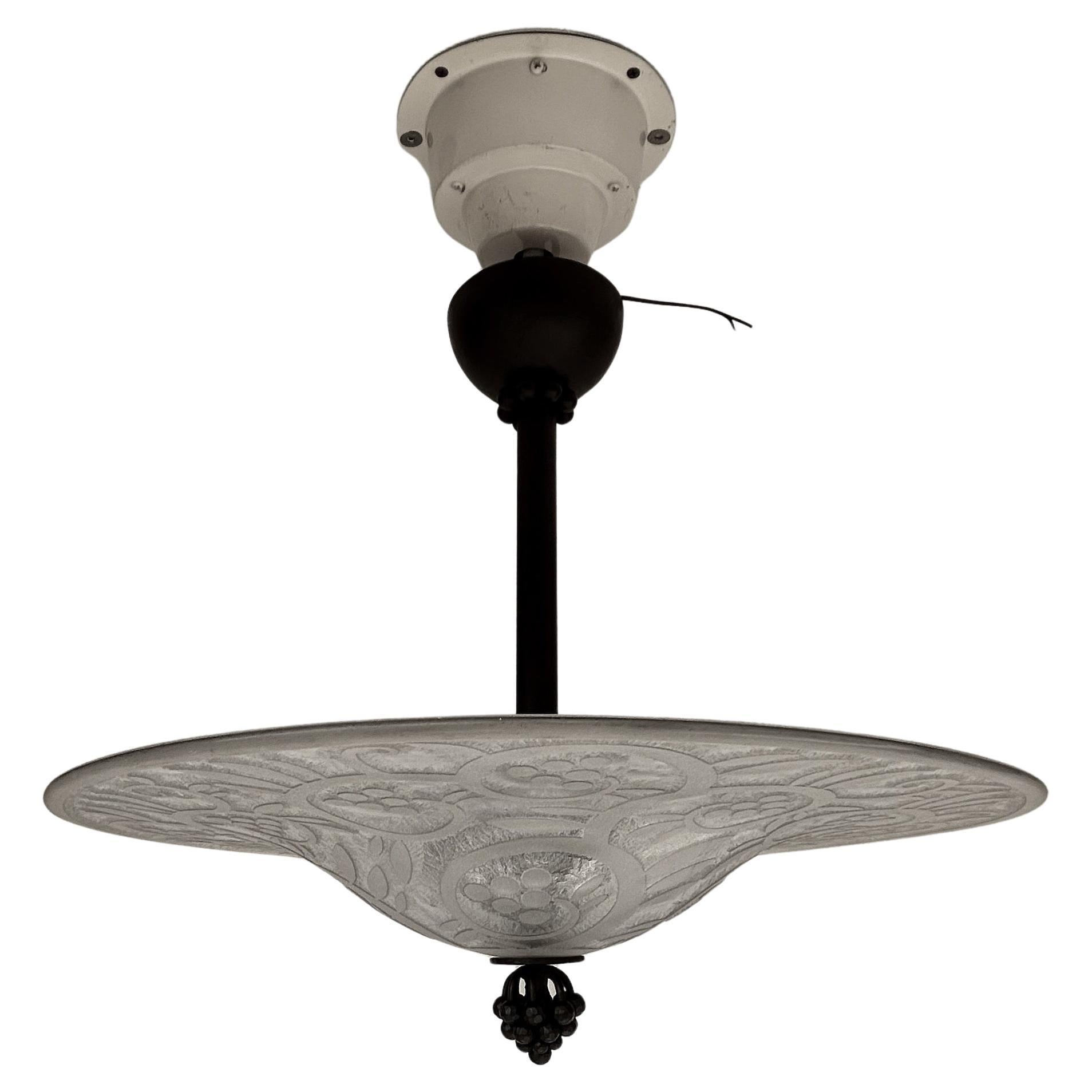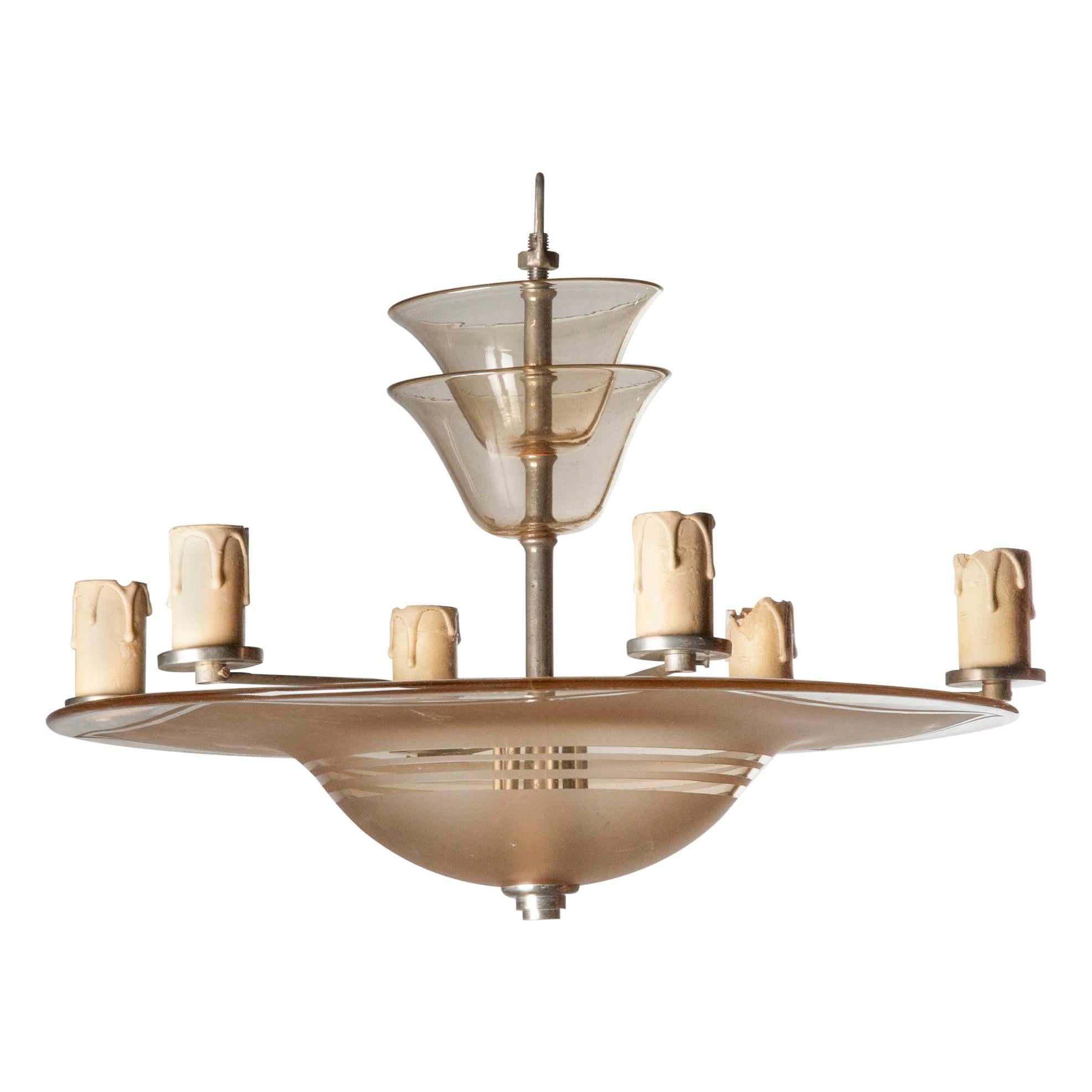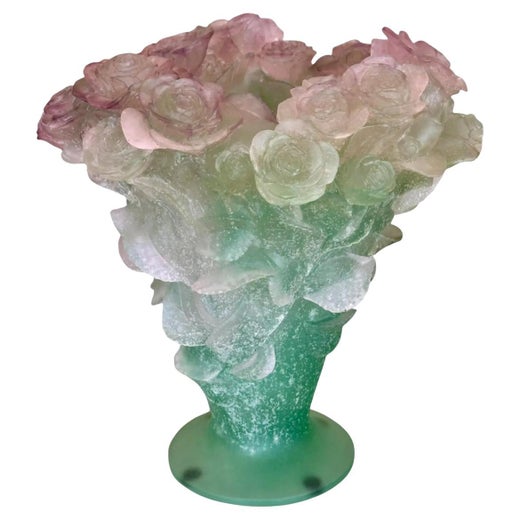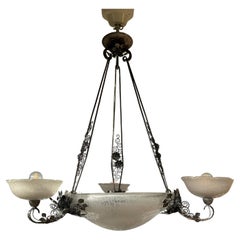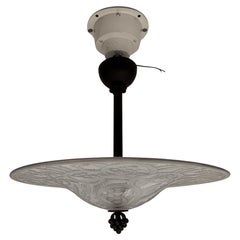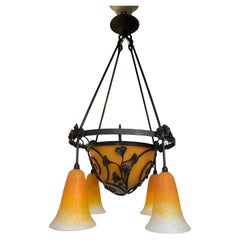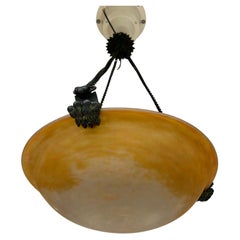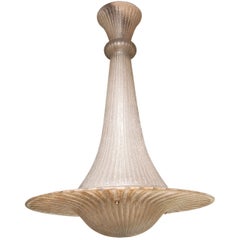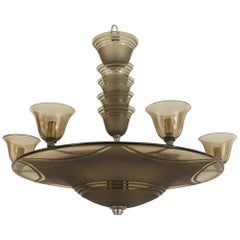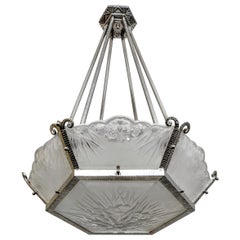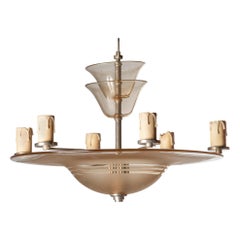Daum Nancy Art Deco Chandelier
Informazioni sull’articolo
- Creatore:Daum (Produttore)
- Dimensioni:Altezza: 71,5 cm (28,15 in)Diametro: 49 cm (19,3 in)
- Alimentazione:Via cavo
- Tensione:110-150v,220-240v
- Paralume:Incluso
- Stile:Art Déco (Del periodo)
- Materiali e tecniche:
- Luogo di origine:
- Periodo:
- Data di produzione:1930
- Condizioni:
- Località del venditore:NANTES, FR
- Numero di riferimento:1stDibs: LU7403245426372
Daum
Per i collezionisti, Daum è un nome di primo piano tra i produttori francesi di vetro d'arte, insieme a quelli di Émile Gallé e René Lalique. Guidata nei primi decenni dai fratelli Auguste (1853-1909) e Antonin Daum (1864-1931), l'azienda, con sede nella città di Nancy, si è affermata nel periodo Art Nouveau e in seguito ha adottato con successo lo stile Art Deco.
Nel 1878, l'avvocato Jean Daum rilevò la proprietà di una vetreria come pagamento di un debito e insediò i suoi figli come proprietari. Inizialmente, Daum produceva vetro per usi quotidiani come finestre, orologi e stoviglie , ma il successo che Gallé riscosse all'Esposizione Universale di Parigi del 1889 - la vetrina internazionale per la quale fu costruita la Torre Eiffel - ispirò i fratelli Daum a iniziare a produrre pezzi in vetro artistico. Daum divenne famosa per le opere in vetro cammeo, una tecnica decorativa in cui uno strato esterno di vetro viene inciso con l'acido o intagliato per rivelare lo strato sottostante, ma Daum divenne famosa soprattutto per i vasi e le sculture in pâte de verre - un metodo minuzioso in cui il vetro colorato finemente macinato viene mescolato con un legante, messo in uno stampo e poi cotto in un forno.
Sebbene i primi vetri Daum non fossero mai firmati da singoli artisti, l'azienda impiegò alcuni dei maestri dello stile naturalistico e asimmetrico dell'Henri Nouveau, tra cui Jacques Grüber, Henri Bergé e Amalric Walter (il cui nome di battesimo è spesso scritto in modo errato). Daum collaborò anche con il designer di mobili e oggetti in metallo Louis Majorelle, che creò supporti in ferro battuto e ottone per vasi e lampade da tavolo. Negli anni '60, Daum commissionò ad artisti, in particolare a Salvador Dalí e allo scultore César Baldaccini, la progettazione di pezzi in vetro. Come puoi vedere dalle opere offerte su 1stDibs, Daum ha ospitato una serie incredibilmente ricca di spiriti creativi e oggi è un'azienda statale che produce statuette in pâte de verre.
- SpedizioneRecupero del preventivo…Spedizione da: NANTES, Francia
- Politica di reso
Altro da questo venditore
Mostra tuttoVintage, Anni 1920, Francese, Art Déco, Lampadari e lampade a sospensione
Ferro battuto
Metà XX secolo, Francese, Art Déco, Lampadari e lampade a sospensione
Ferro battuto
Vintage, Anni 1920, Francese, Art Déco, Lampadari e lampade a sospensione
Ferro battuto
Vintage, Anni 1920, Francese, Art Déco, Lampadari e lampade a sospensione
Vetro
Metà XX secolo, Francese, Art Déco, Lampadari e lampade a sospensione
Ferro battuto
Metà XX secolo, Francese, Art Déco, Lampadari e lampade a sospensione
Bronzo
Ti potrebbe interessare anche
Vintage, Anni 1930, Francese, Art Déco, Lampadari e lampade a sospensione
Vetro
Inizio XX secolo, Francese, Art Déco, Lampadari e lampade a sospensione
Vetro
Metà XX secolo, Francese, Art Déco, Lampadari e lampade a sospensione
Ferro battuto
Di antiquariato/d’epoca, Metà XIX secolo, Francese, Art Déco, Lampadari ...
Ferro
Vintage, Anni 1930, Francese, Art Déco, Lampadari e lampade a sospensione
Bronzo
XX secolo, Francese, Art Déco, Lampadari e lampade a sospensione
Vetro artistico
